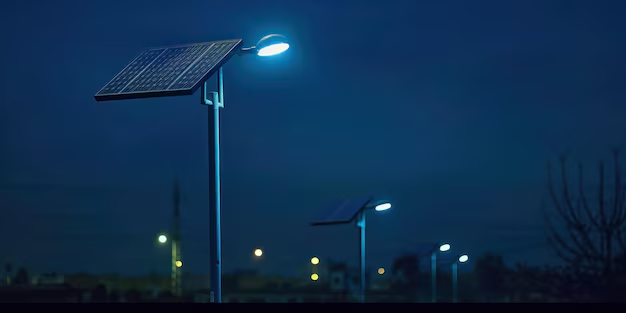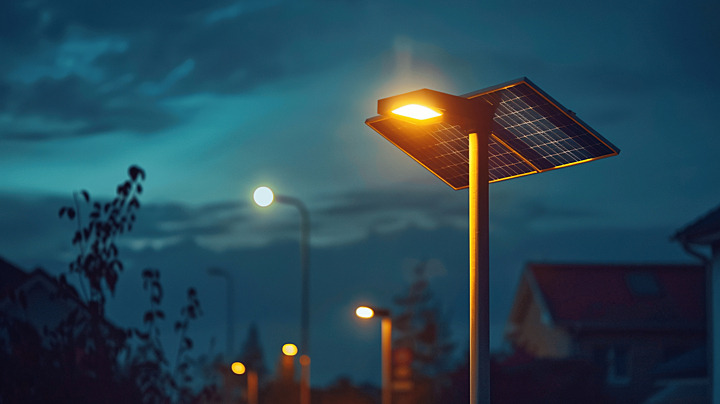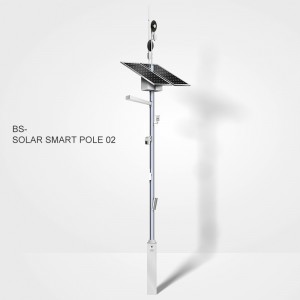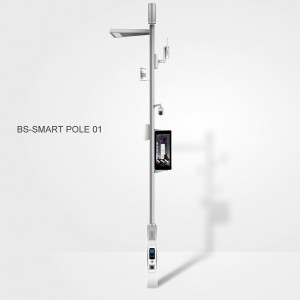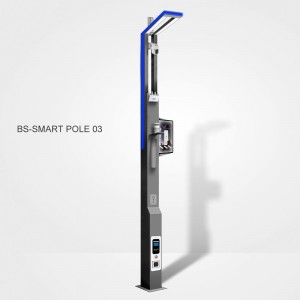Advanced 5G Smart Poles for Smart City Infrastructure
The fifth generation of wireless technology, 5G, promises a technological revolution, delivering blisteringly fast speeds, ultra-low latency, and the capacity to connect billions of devices. This is the foundation upon which smart cities, autonomous vehicles, and the fully realized Internet of Things (IoT) will be built. However, fulfilling this promise requires an infrastructure overhaul far more complex than previous wireless generations. The transition from 4G’s macro-towers to 5G’s dense, street-level network has presented a monumental challenge to telecom operators and city planners worldwide.
The solution to this infrastructural bottleneck is not a brand-new, costly, and disruptive utility, but rather a strategic evolution of an existing one: the streetlight. The new generation of urban furniture, the smart pole, is rapidly emerging as the most crucial piece of the 5G small cell infrastructure, transforming a simple luminaire into the multifaceted, digital backbone of the modern metropolis. These poles are proving to be more than just streetlights; they are the key to unlocking seamless, high-speed mobile connectivity and driving efficient 5G smart city deployment.
As global cities race toward digital transformation, one piece of infrastructure has quietly emerged as a cornerstone of the 5G revolution: the smart pole. Once designed simply to hold lights, these multi-functional structures are now being reimagined as the backbone of 5G small cell infrastructure, enabling next-generation connectivity while powering a new era of urban intelligence.
Smart Pole Market Size & Forecast (2024-2033)
The market for smart poles is characterized by strong double-digit growth, reflecting its foundational role in modern urban infrastructure.
| Metric | Estimated Value (2024) | Projected Value (2033/2034) | Compound Annual Growth Rate (CAGR) |
| Market Size (Revenue) | USD 10.5 Billion to 16.95 Billion | USD 40.5 Billion to 85.16 Billion | 14.8% to 22.36% |
| Global Deployment | ≈2.3 Million units installed globally | N/A | N/A |
The Urban Challenge Behind 5G Expansion
5G promises lightning-fast data speeds, ultra-low latency, and the ability to connect millions of devices simultaneously — the foundation for autonomous vehicles, real-time traffic management, and smart city ecosystems.
But achieving that vision requires far more than upgrading existing cell towers.
Unlike 4G, which can cover large areas with relatively few towers, 5G operates at much higher frequencies that have shorter range and poorer penetration through obstacles. To maintain seamless coverage, telecom operators must deploy thousands of small cells — compact base stations — within dense urban grids.
This is where the problem begins:
Limited space for new towers, especially in developed cities.
Visual clutter concerns from residents and city councils.
Complex permitting and right-of-way approvals.
High installation and maintenance costs when deploying separate poles for telecom, lighting, and surveillance.
Smart poles solve all of these at once.
What Is a Smart Pole in the 5G Era?
A smart pole is an intelligent, modular urban structure that integrates LED lighting, sensors, cameras, EV chargers, environmental monitoring, and wireless communication equipment — including 5G small cells — into a single, aesthetically designed unit.
In the context of 5G rollout, smart poles act as both lighting assets and telecom nodes, hosting 5G antennas, backhaul equipment, and edge computing units without requiring additional visual or structural clutter.
These poles are purpose-built for mobile connectivity — an evolution from the “smart streetlight” to a “smart pole for 5G connectivity.”
How Smart Poles Solve 5G’s Densification Problem
(1) Optimal Height and Placement
Smart poles typically range from 8–12 meters in height — ideal for line-of-sight coverage in dense urban environments. They are already evenly distributed across city blocks for lighting, making them the perfect real estate for small cell deployment without constructing new infrastructure.
(2) Power and Backhaul Integration
Smart poles already have grid access, enabling direct power supply to telecom equipment. Many also integrate fiber backhaul or microwave relays, providing the essential connectivity backbone for 5G small cells.
(3) Cost Efficiency for Telecom Operators
By sharing infrastructure with municipal lighting networks, telecom operators reduce the CAPEX and OPEX of 5G deployment:
No new pole construction or site rental fees.
Faster permitting — the pole already exists.
Shared maintenance and utility costs with city operators.
According to several pilot projects, infrastructure sharing through smart poles can reduce 5G rollout costs by 40–60%.
(4) Streamlined Aesthetics and Compliance
Instead of separate boxes and antennas cluttering sidewalks, smart poles conceal equipment inside the structure. The antennas can be flush-mounted within the pole or integrated into a decorative crown, maintaining urban aesthetics and minimizing public resistance.
Inside the Design: The 5G Smart Pole Infrastructure
A smart pole 5G system is far more sophisticated than traditional lighting hardware.
5G Small Cell Antennas: Compact units mounted at the top or integrated into the pole’s enclosure for the whole citywide signal coverage.
Edge Computing Units: Mini data centers at the pole base for low-latency data processing.
Fiber Backhaul Module: Connects small cells to the network core.
Integrated Power Management: Supplies both the LED lighting and telecom devices with regulated voltage.
Cooling & Ventilation System: Prevents overheating of small cells and processors.
Smart Controller: Manages lighting brightness, power usage, and data collection.
Environmental and Security Sensors: Air quality, temperature, noise, or surveillance cameras for smart city analytics.
This convergence of communication, energy, and data functions transforms every light pole into a multi-service platform — a node in the broader 5G smart city deployment.
Cost and Efficiency Benefits for Cities and Operators
The smart pole for mobile connectivity delivers advantages to both telecom providers and municipal governments:
Shared Infrastructure = Shared Cost Savings
Cities avoid duplicating physical infrastructure, while telecom providers gain ready-made mounting locations with power and fiber availability. The result: faster return on investment for 5G projects.
Simplified Maintenance
Smart poles feature modular components — lighting, power, and communication units can be serviced independently without affecting other systems. Predictive maintenance, enabled by onboard IoT sensors, further reduces downtime and cost.
Improved Energy Efficiency
Integrated smart LED luminaires consume up to 70% less energy than conventional lamps. Combined with automated dimming and solar backup options, smart poles align with carbon-neutral city initiatives.
Monetization Opportunities
Cities can lease smart pole space to multiple mobile network operators (MNOs), creating a new revenue stream. Some cities even incorporate digital advertising panels or EV charging to further offset infrastructure costs.
Real-World Example: Tokyo’s Smart Pole 5G Deployment
Tokyo offers one of the most advanced examples of 5G small cell infrastructure integration through smart poles. Ahead of the 2021 Olympic Games, the Tokyo Metropolitan Government collaborated with NTT and Panasonic to deploy smart poles equipped with 5G small cells, Wi-Fi routers, and environmental sensors across key districts like Shinjuku and Ginza.
Cities can lease smart pole space to multiple mobile network operators (MNOs), creating a new revenue stream. Some cities even incorporate digital advertising panels or EV charging to further offset infrastructure costs.
Global Trends: The Smart Pole Market Boom
The demand for 5G small cell infrastructure is driving exponential growth in the smart pole industry. According to market reports:
The global smart pole market is projected to exceed $25 billion by 2030, growing at over 18% CAGR.
The majority of this growth is attributed to 5G smart city deployment and mobile network densification.
Governments are increasingly adopting public-private partnerships (PPP) where telecom operators fund smart pole installations in exchange for small cell hosting rights.
In Europe, Vodafone and Telefonica are partnering with municipalities to co-deploy smart poles, while in India, the Department of Telecommunications is using smart poles to accelerate 5G rollout in congested metros.
Post time: Oct-23-2025


